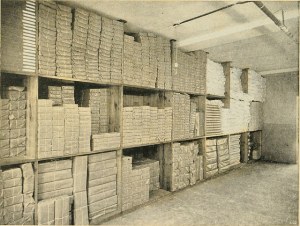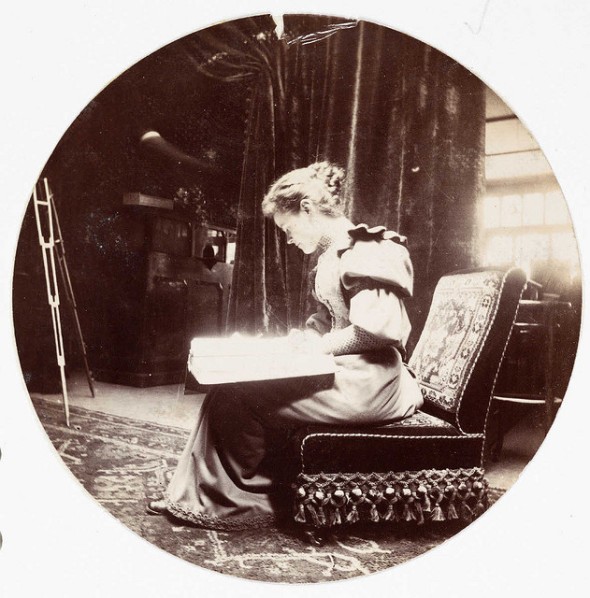
“Part of linen room containing supplies for the three hotels” – Internet Archive Book Images flickr.com
I am a huge fan of Preservation Week. Not just because our Preservation Librarian brings baked goods to events, but because digital preservation should be within the reach of everyone. Family historians, amateur photographers: you don’t have to be a historian or pro photographer to create content worth saving.
My training in digital preservation has taken place over most of my professional life, and I hesitate to call myself an expert. Too much of the landscape is in flux, from formats at one end to digital preservation systems at the other. I’m pleased to see academic libraries moving in a positive direction, but we haven’t arrived. Even the Federal Agencies Digitization Guidelines Initiative (FADGI to those of us who need to refer to it more than once a week) doesn’t have all the answers.
That being said, digital preservation is also perfectly possible for those who do not wish to devote the rest of their lives to the field. Little things, like knowing what digital files we have, where they are, and backing these files up regularly is within the realm of the family historian and the amateur photographer. As I was sitting in a Preservation Week webinar, munching my brownie and thinking how wonderful it is to bring knowledge of the central tenets of digital preservation to the everyman, I had a certain nagging feeling of unease.
Too much sugar? No, just a mild case of hipocrisy. I may spend my days working to build preservable digital collections, but at home my own laptop had been looking more like a teenager’s closet than the tidy warehouse pictured above. My OS was out-of-date, I had no idea what was in my downloads folder, and the date of the last backup was appalling. Bad librarian!
Am I alone? Do some of you also choose playing with your dog or watching a movie over the noble and necessary but less fun task of figuring out why you have so files with names like A2KRE5XYZ.pdf?
If so, here is my quick and dirty guide to preservation. This is not the professional-grade preservation I do at work, but the time-left-to-rub-the-dog’s-tummy grade preservation I keep up at home.
0.5. If you are worried you might get carried away cleaning out files, or you plan to do lots of upgrades, back up your entire hard drive. I do a hard drive backup and a cloud backup.
1. Corral your flash drives. Make sure they have stuff you want on them. Make sure the stuff you think is also on your computer actually is on your computer. Erase and/or copy to your computer as needed.
2. Fill your Trash folder. My big culprits are Desktop and Downloads, but you know where your nasty folders are. If you don’t know why it’s important, don’t keep it.
3. If you are feeling really ambitious, take a look at your Photos. I know I am not the only one who has far too many pictures of latte art.
4. Clean out your Applications/Programs. I had to upgrade my OS (always backup before doing that), and then discovered several programs I used as a student which either required a license (long expired) or that were no longer maintained. Into the trash they went.
5. Empty your Trash folder.
6. Marvel at the wallpaper you haven’t seen in years
7. Rub the dog’s tummy.
See? Not so awful. If you want more, visit the Preservation Week website, or go to your local library and ask the librarians for more. They’re very good at preserving others’ content, even if their own Desktop folders are a little messy.






